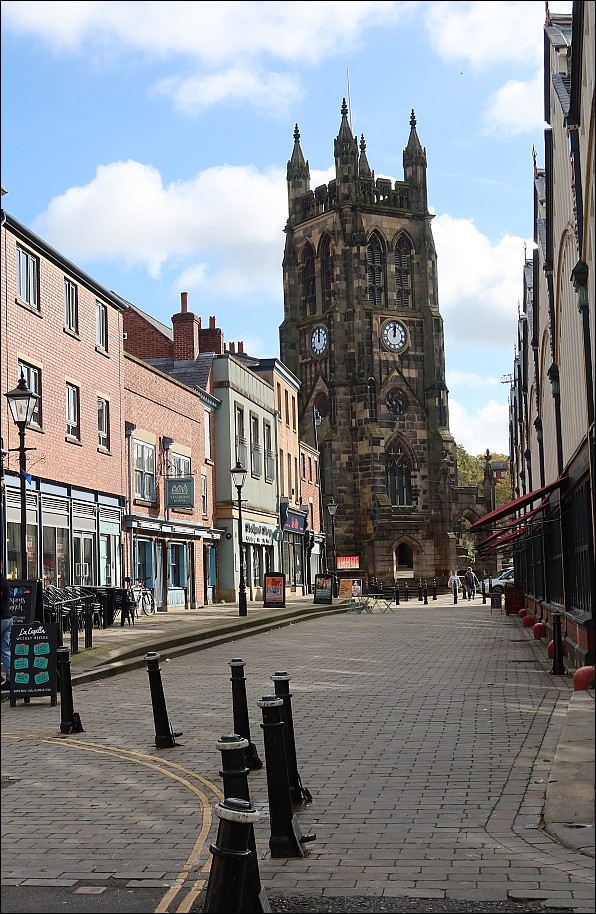We visited Staircase House in Stockport Town centre on a grey and characterless day which seemed to match the front of the building which is fairly nondescript. The interior, though, is most interesting. Judith Wilshaw’s husband Eddie acted as our tour guide as he was the Project Officer for the renovation of the house so has extensive knowledge about it.

It is an excellent example of great commitment and enthusiastic determination by Stockport Council and others to preserve and restore an old building of historical importance that has been awarded Grade 2* listed building status. Unusually for such an old building, there is an almost continuous record of its evolution over time.
 Built as a cruck frame dwelling in 1460, it has suffered the ravages of weather, many alterations and changes over the years and a partial roof collapse. There was a lack of maintenance and there have been two fires, one of which was an arson attack in 1995 and left the building close to collapse, so in 1996 Stockport Council made a compulsory purchase order to acquire it with the aim of restoration.
Built as a cruck frame dwelling in 1460, it has suffered the ravages of weather, many alterations and changes over the years and a partial roof collapse. There was a lack of maintenance and there have been two fires, one of which was an arson attack in 1995 and left the building close to collapse, so in 1996 Stockport Council made a compulsory purchase order to acquire it with the aim of restoration.
We entered via the Stockport Museum gift shop which is perhaps worth a visit in its own right. We walked through a labyrinth of mainly small rooms and passageways with uneven floors that link all the rooms over the three different floors. The building is timber framed and there is great expanse of oak. There are many furnishings that show various period pieces and replicas and a fine and rare cage-newel staircase thought to cost a considerable amount of money to build and was also very expensive to restore. It was made in 1618 for the Shallcross family who were the owners at the time. Many historic houses have rich and famous ancestors, lavish interiors, or where great events happened. Staircase House is more about the house itself and how it developed physically through time. There are very many examples of different building material styles, techniques and construction methods used from ancient days to more modern including clear examples such as the use of wattle and daub.
Although built and used as a town house, and having residents living there until the 1940’s, it was used many times as commercial premises for some small firms until the last century where the last business was a cafe and greengrocer. The cafe was called Staircase Cafe and it is thought that name was continued.
This was a very impressive and successful restoration project that has won several awards and which offers interest and novelty to many people. It provides educational and cultural heritage facilities for visiting school parties and also various courses, practical workshops and events for all ages.
Dale Spencer - November 2024




